You don’t need me to tell you it’s going to be a challenge to travel over the next couple of days. The top news story is about the Bomb Cyclone that Mother Nature is throwing at much of the U.S. She’s either really trying to keep loved ones apart or together … depending if they’ve already arrived! RELATED: 10 Items I Have in Case of Emergency
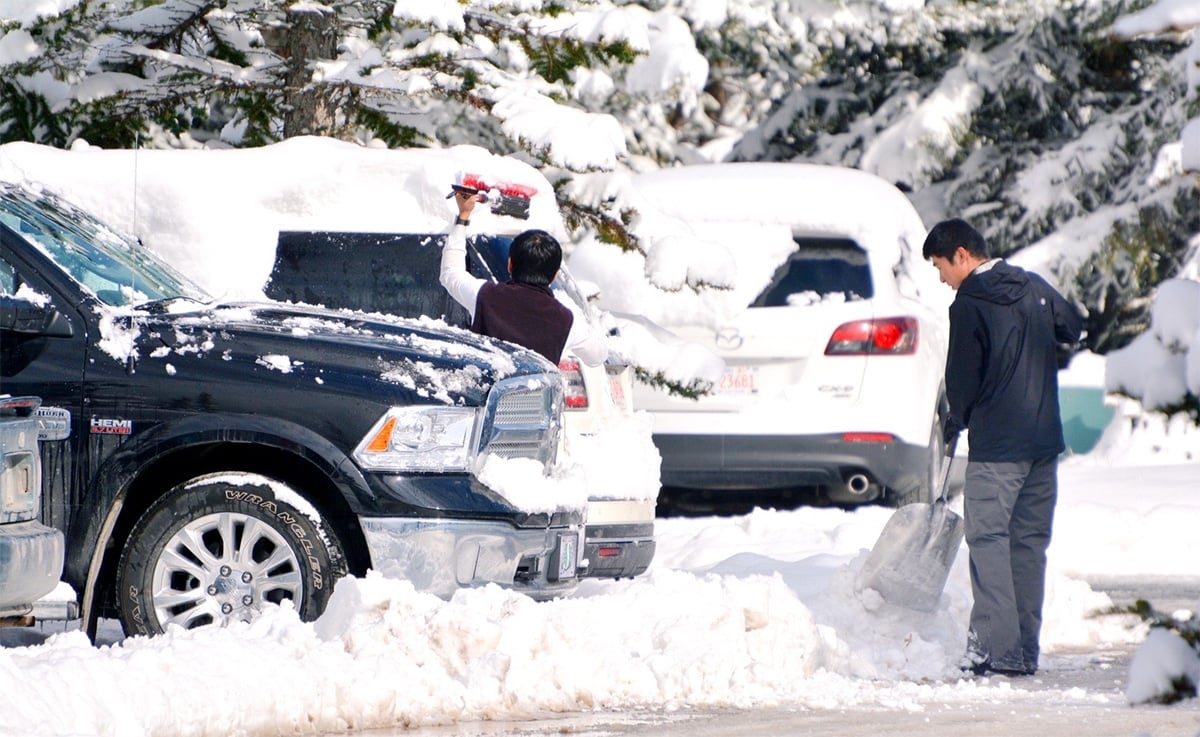
This post contains references to products from one or more of our advertisers. We may receive compensation when you click on links to those products. For an explanation of our Advertising Disclosure, visit this page.
AAA recently released their 2022 holiday forecast and they estimate that “112.7 million people will journey 50 miles or more away from home from December 23 to January 2. That’s an increase of 3.6 million people over last year and closing in on pre-pandemic numbers. 2022 is expected to be the third busiest year for holiday travel since AAA began tracking in 2000.”
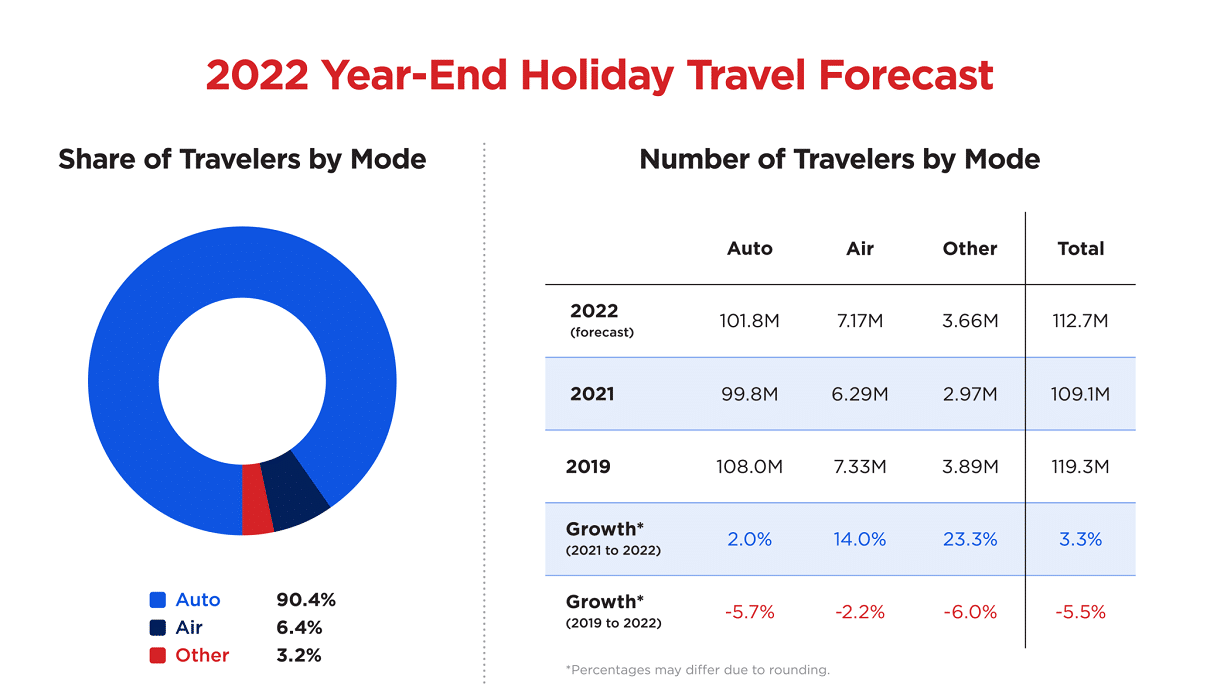
As you can see from the graph above, the majority of travel will be by car, with over 101 million people forecasted to take to the roads.
With so many people trying to get to grandma’s house, it’s important to be reminded of safe winter driving tips. The New York Times this morning gave some great advice: “If you’re driving, try to avoid leaving during busy times of day. And keep a few items in your vehicle that could be lifesaving, like a first-aid kit, an ice scraper, snacks, water, jumper cables, extra hats and gloves and hand warmers. I learned to drive on a beat-up Jeep Wrangler that could handle anything, even my winter commute to high school on rural roads in Wisconsin. You may not have four-wheel drive, but the same rules for navigating a winter storm apply: Fill up your gas tank, drive slowly, and avoid jerky, uncontrolled movements with the wheel once you’re en route.”
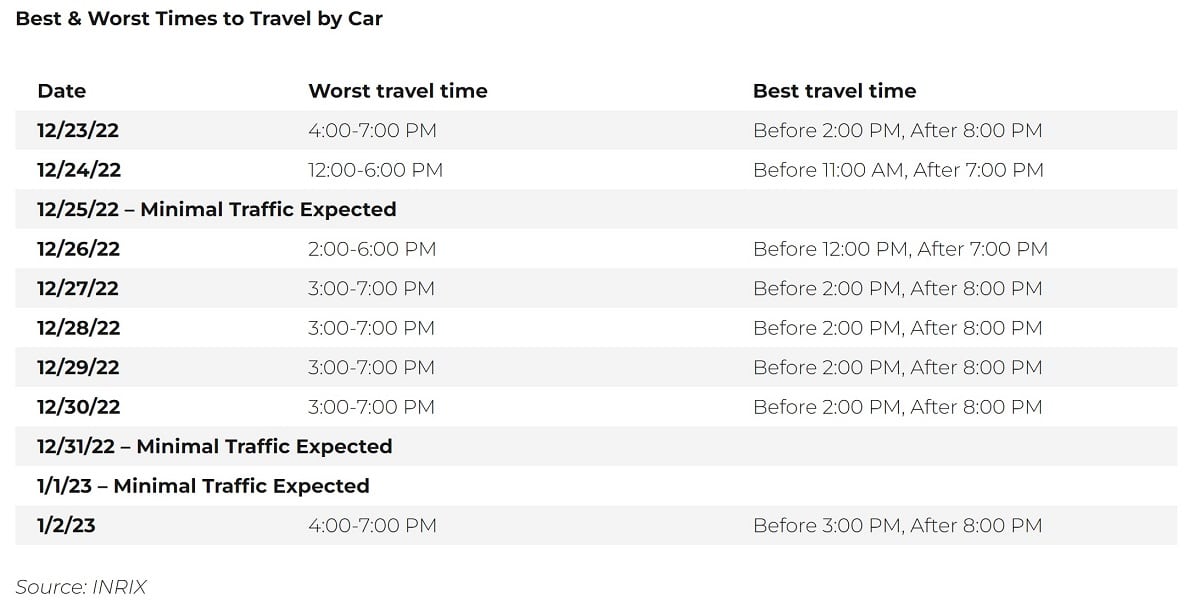 If you’re wondering what the busy times of the day to drive are, AAA, created a chart (above) of the best and worst times to travel by car.
If you’re wondering what the busy times of the day to drive are, AAA, created a chart (above) of the best and worst times to travel by car.
If you’re looking for more driving tips, Allianz Global Assistance put out a super helpful checklist a few years ago to help get your car prepared for winter:
1. Winter tires, a wise precaution
A basic rule of thumb: Make sure all tires are in perfect condition. But fitting a car with winter tires might prove to be a driver’s best choice. This not only helps preserve your traditional tires, but also helps improve your vehicle’s safety in cold weather and on slippery roads, both fixtures of winter driving.
At the very least, make sure you have a kit of “tire socks”—a textile tire cover designed to help vehicles get traction on snow and ice—at the ready to put on summer tires when the roads are covered in snow.
2. The “extreme cold” kit helps you face winter’s obstacles
Every winter, drivers find themselves trapped for hours in their cars because of traffic jams caused by snowfall or a chain of accidents caused by icy rain. At the very minimum you should have a flashlight, an ice scraper, a shovel and a blanket stored in your car. Always make sure you have warm clothing, gloves, boots, bottled water, and snacks, even in you’re only traveling a short distance, and especially if you’re traveling with children.
3. Have a check-up before hitting the road
Cars today are safer than ever but winter puts them to the test, and dealing with even a minor breakdown when it’s 0° or -10° outside is always complicated and stressful. As a preventative measure, here are a few simple things to check out:
- Periods of extreme cold can greatly tax and drain a car’s battery. If the battery is easily accessible, make sure its wires are not damaged, and that it’s completely charged. Have an extra pair of jumper cables in the trunk for a quick restart by any other driver in the vicinity.
- Check to make sure your vehicle lights, including fog lights, are clean and in good working order. It’s also important to check that the windshield wipers leave no streaks on the windshield.
- Verify the oil, water and wiper fluid levels and fill them if necessary. And don’t forget to add the appropriate anti-freeze.
- Have your cell phone completely charged and a charger for back-up.
4. Caution, caution, caution
Black ice on a bend in the road that you approach too quickly will most certainly send you and your car off the road, even with the best brakes in the world. Remember to slow down and leave a little extra room between you and the car in front of you. Remember to take along your assistance company’s phone number and have it handy should you need help in any situation.
And of course, before heading out during the winter, it’s easy to check the weather on the route you plan to take. If you do get caught in an unexpected storm, don’t try to be Superman—just pull off to the side of the road.
KEEP READING
- How to Save Money With a Secret Third Carry-On
- How to Use Your Wireless Headphones to Watch In-Flight Movies
- 10 Airport Security Hacks Every Traveler Should Know
- How to Get the Best Coach Seat on the Plane
- The Sleep Hack Every Traveler Needs to Know
- Never Get Your Valuables Stolen on the Beach
Love to save money when you travel? Sign up to Johnny Jet’s free newsletter and check out these popular posts: 10 ways to find cheap flights and 12 ways to save money on baggage fees. Follow Johnny Jet on MSN, Facebook, Instagram, Pinterest, and YouTube for all of my travel posts.





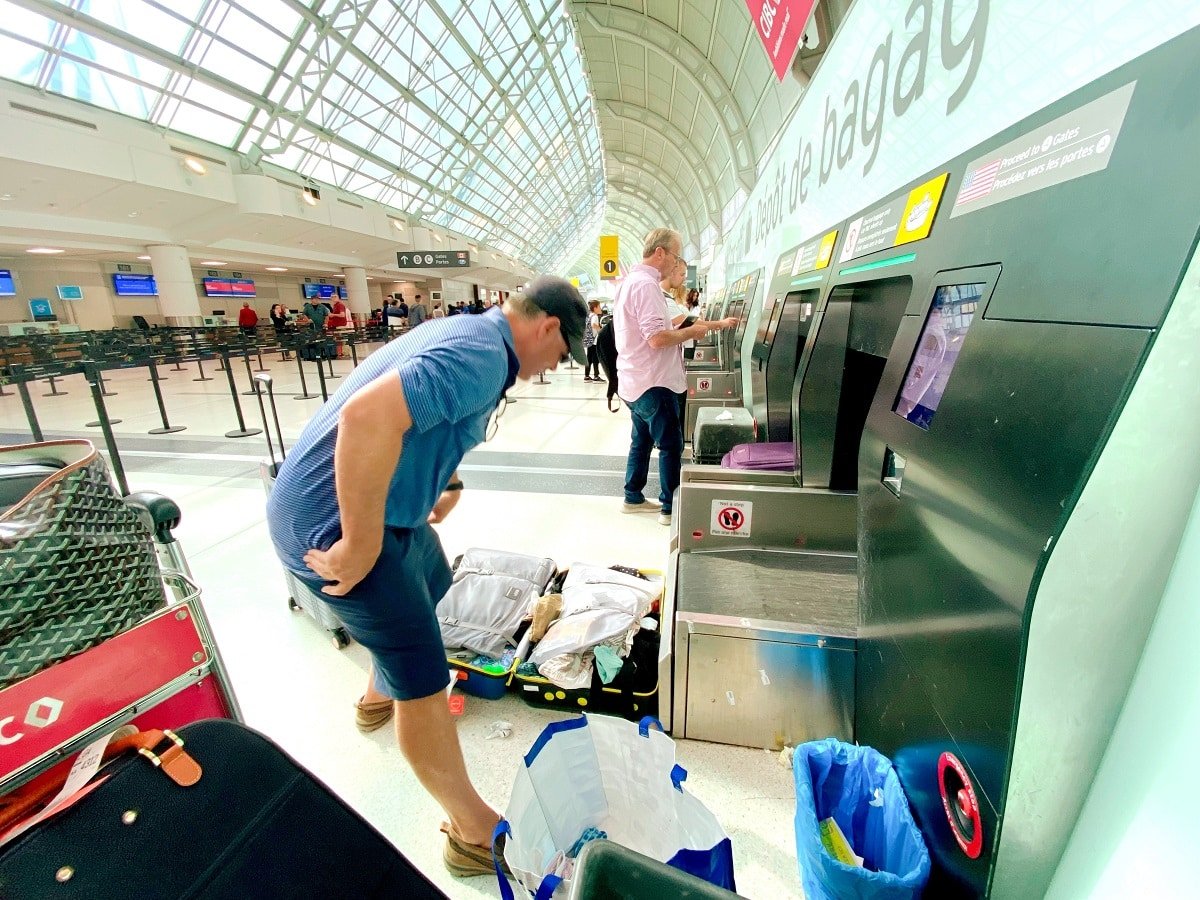
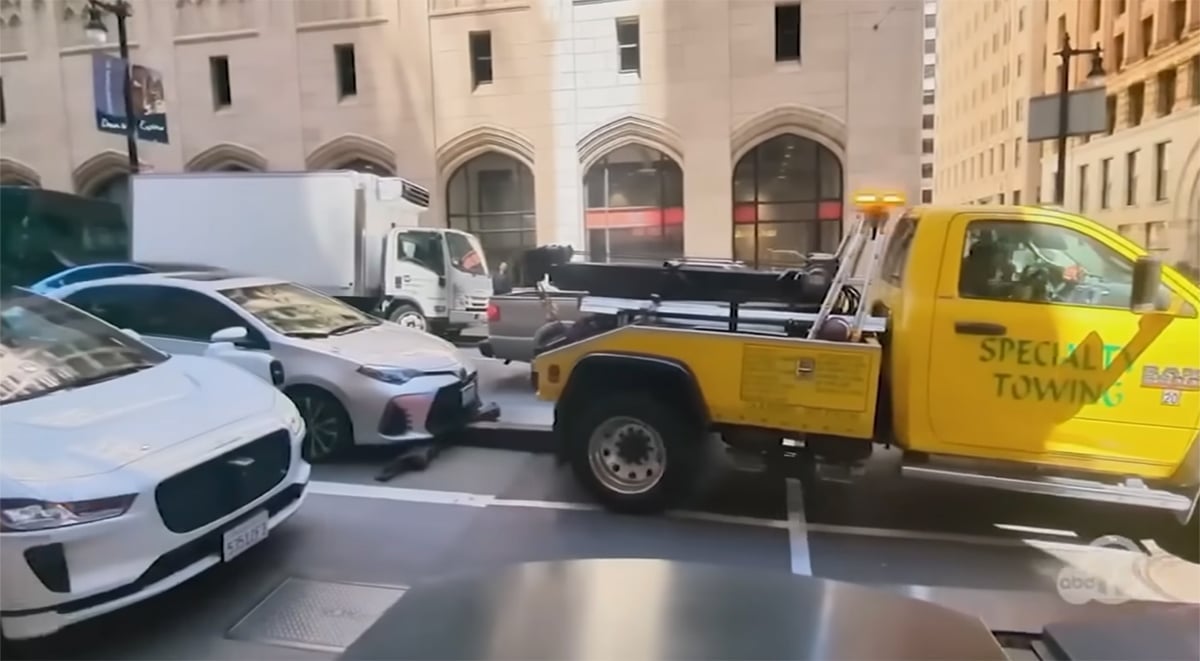

I was a very avid skier in the 80’s and mostly drove to Mammoth,a five hour drive-alone. My family is from Idaho up near Ketchum-my dad also a avid skier. He gave me an empty coffee can with a pillar candle along with a wool blanket and a survival blanket to always keep in the car. He explained a lit candle in a coffee can works as a heater as well as a light in an emergency!
Great tip!